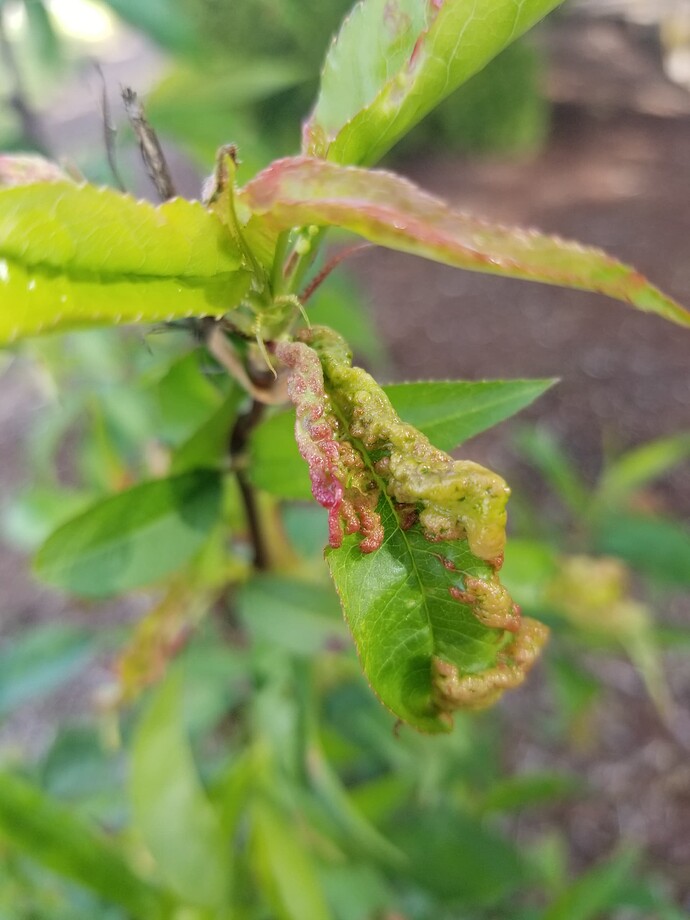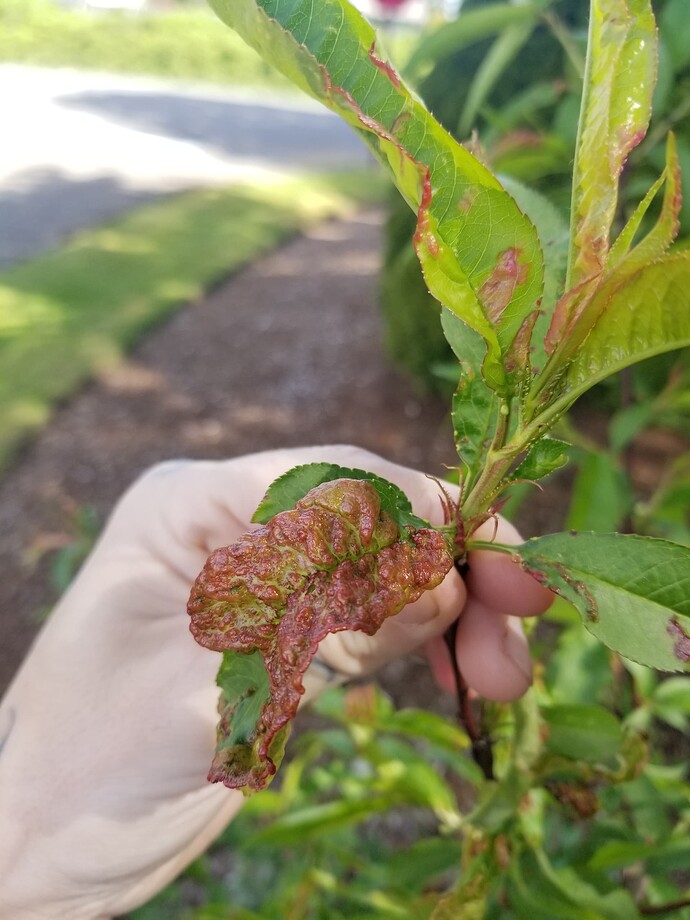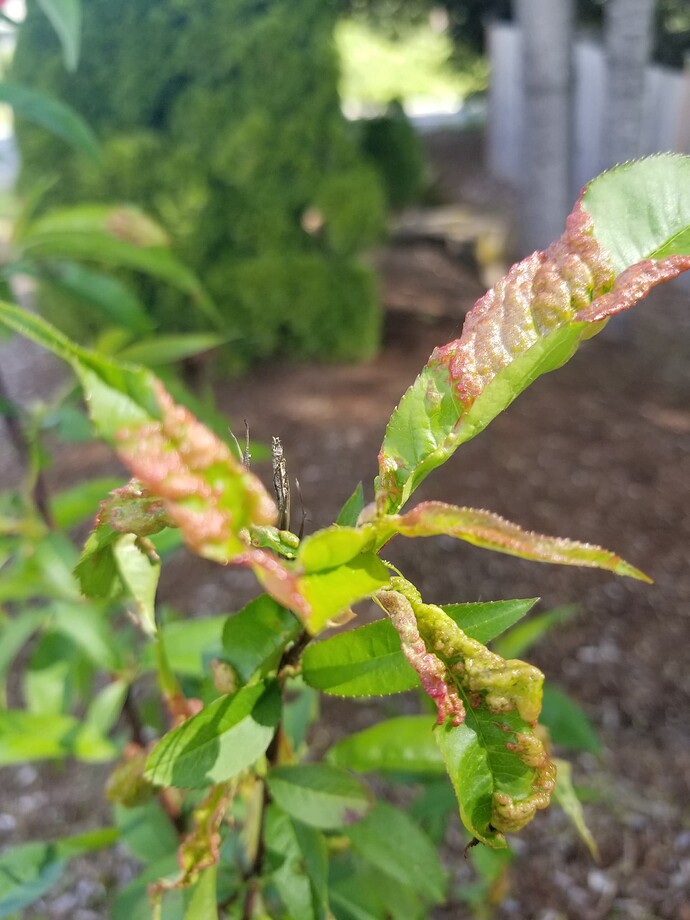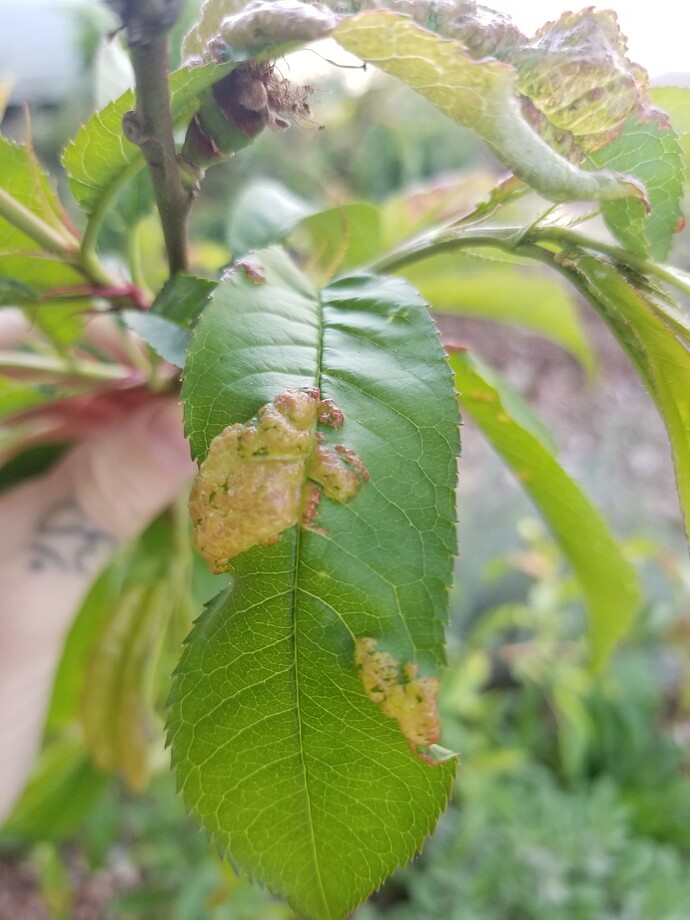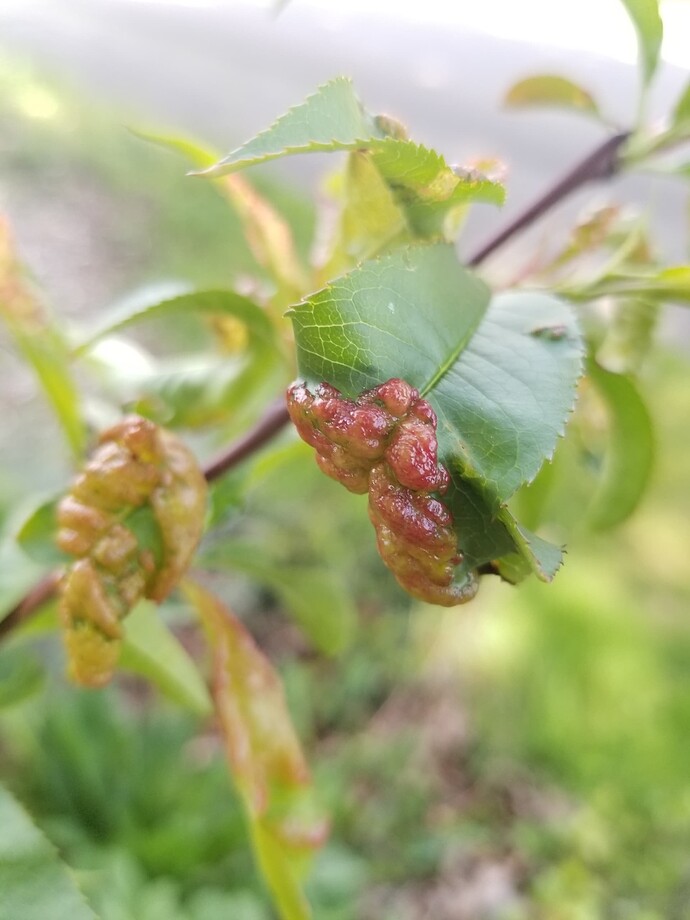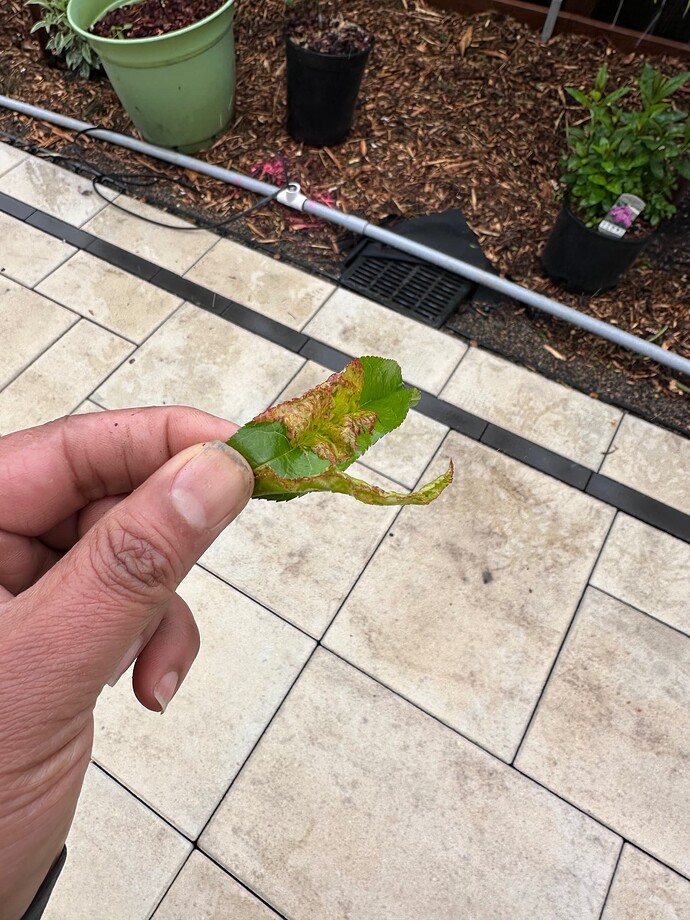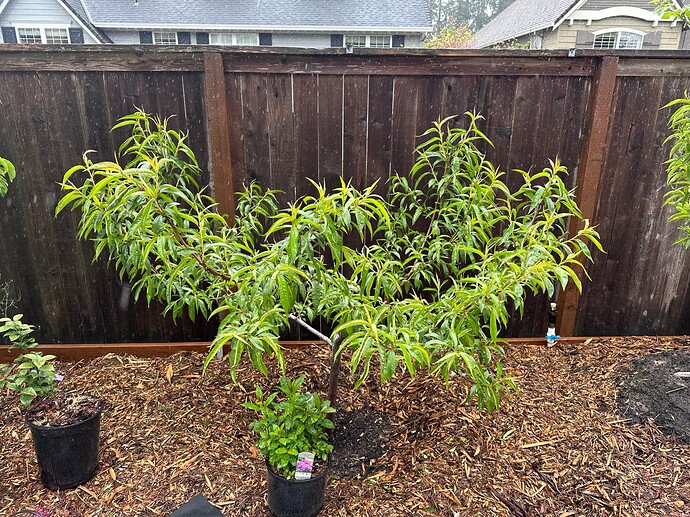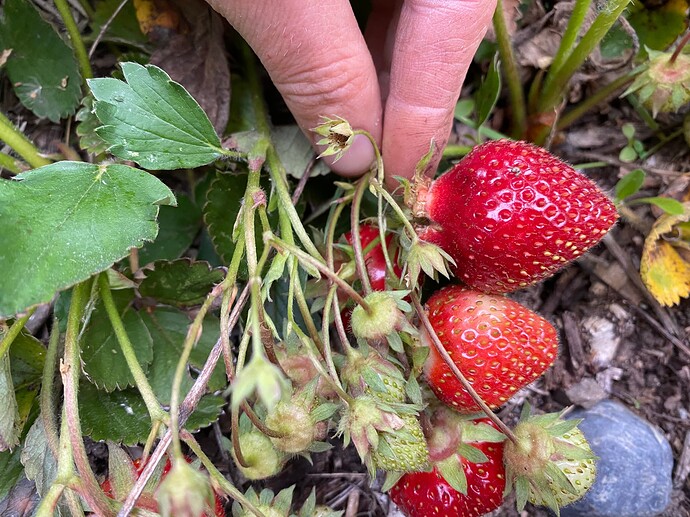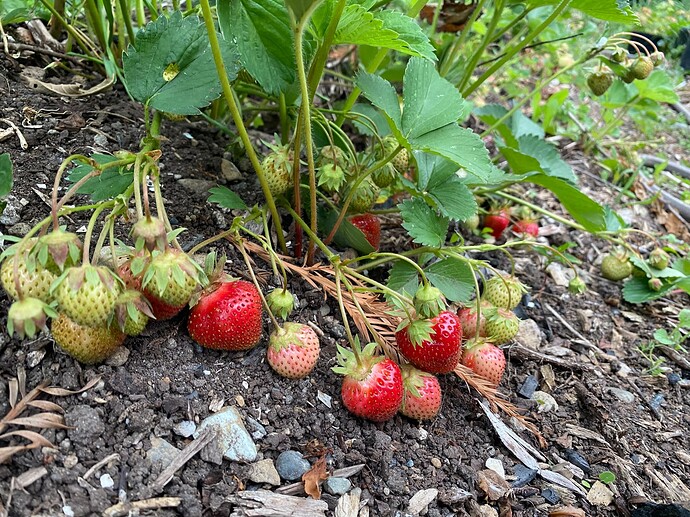I’m not sure I took any documentation because I was so upset about the trees health each season that I avoided it. It also wouldn’t be the first mislabeled plant I got from Restoring Eden so there is always that possibility as well. If I find an old picture I’ll send it your way.
There’s also an insect that can cause distorted leaves on Prunus which looks quite similar to peach leaf curl. I haven’t figured out its identity, but it is very small and seems to overwinter on the trees and affect the same trees year after year unless they are treated with an insecticide.
I’m not sure if the Curly Leaf Plum Aphid is the one.They go after some of my Plum trees,causing the young leaves to distort,but haven’t visited the Apricots.
Brown Rot Blossom and Twig Blight causes damage,during the Spring rainy season.The effects are more of a dying of flowers and shoot ends.
Yes, I think that might be it. Hey @etheth32992 check out the images on Google. I think this might be what’s going on with your apricot. You can see how much the distorted leaves look like peach leaf curl, but it’s not.
https://www.google.com/search?sca_esv=4798f66b03e5dfbb&sca_upv=1&sxsrf=ADLYWIKF0EHhoP5pKNxWu7WVHUiaqtExbA:1714720094859&q=Curly+Leaf+Plum+Aphid&tbm=isch&source=univ&sa=X&ved=2ahUKEwiUr5KR9vCFAxU_JjQIHQXhBCUQnN8JegQIEBAD&biw=1582&bih=737&dpr=1.21
It is possible that even the leaf curl on your leaf curl resistant nectarine is actually being caused by the aphids as well.
‘Pacific Pride’ Nectarine reoccurring disease issues. I didn’t see any aphids but I’m not sure you can see the specific ones you guys are referring to with the naked eye or not. This variety does this every year since I got it.
It’s peach leaf curl.
Peach and Apricot each of distinctive leaves that aren’t similar to one another.
Yeah, that’s definitely peach leaf curl on your nectarine. I’d be curious to see the leaves of your apricot. For what it’s worth, resistant peaches & nectarines still get the curl, they just don’t get it as severely as the non-resistant ones. Its hard to tell from the pictures, but is it affecting the majority of the foliage or only a small percentage of the foliage?
@murky The only peaches, nectarines and apricots I’ve ever grown have been disease ridden since I got them so I havent really noticed the difference in leaves through the angry glares as I’d walk by.
@JohannsGarden Majority of the leaves on the nectarine seem to be infected with PLC, not just a small portion and I already culled the apricot and peach because I wasn’t nearly as patient with them so pictures are a little harder to come by.
I top grafted my small peach, nectarine, and apricot trees over to plum/cot and pluot after PLC killed another of these young trees last year. I grafted over most of the top of the trees either by cleft graft or chip budding, and almost every graft took. I didn’t overgraft all of the branches, I left parts of the original variety. The strange thing was these trees were decimated by PLC last year, and after grafting on plum etc, the original parts of the tree had no PLC and I didn’t use any spray.
Go figure? ![]()
Where are you located, I find it anecdotally that PLC severity is much higher as you move up in the I-5 corridor above Portland. It could be due to climate being much wetter, and something to do with grow environment.
The only variety of nectarine that has exhibited low propensity to curl is Morton, this variety has documentation on ARS repository of not exhibiting curl year after year. Pacific Pride, Kreibich etc. are not well studied varieties to claim PLC resistant, the claims are from the nurseries who want to sell them so take it with a load of salt. If you are not against spraying for curl, I recommend you start a spray regimen with most effective fungicides known to control PLC (Ziram, Bravo) and a few years of effective control should help reduce the inoculum gradually.
I have a nectarine graft that is going into its 2nd or 3rd spring and I think it had no peach leaf curl this year. No spray. I don’t know what variety it is and it hasn’t fruited for me yet. But for some reason it seems curl pressure has been low this year.
For my peach trees that don’t pan out, I graft them to plums or pluots too.
@Oregon_Fruit_Grow I’m pretty close to the Puget Sound in the King County region which would explain why PLC loves some of the susceptible trees on the property. I had some serious health issues in the past so I’m one of those die hard no spray gardeners and It sure has its ups and downs.
I have a scion of ‘Candy Heart’ Pluerry still in the fridge and I’m thinking about grafting one or two of my problem trees over to just to get them started in the right direction. ‘Splash’ is another one I’m looking for to top work one of these PLC loving trees. I’ll have to read more into ‘Morton’ and snag a scion if I come across it. I lived in Morton, WA for a short period of time when I was young so that would be a cool one to have in the garden.
Nice, has it produced any fruits yet?
I have read here that sweet treat pluerry does well, candy heart not so much. Many people on this thread have Splash and Flavor Grenade producing consistently.
Found a few PLC infected leaves on my Frost peach, it appears like the new flush of growth at the top are infected. This tree was not sprayed. So far nothing on Oregon Curl Free which is next to the Frost peach and Salish Summer on the other side of the yard.
So, just out of curiosity. How would you rate your stone fruit trees health/growth/crop so far this year?
I must admit I’ve been very pleasantly surprised, and my stone fruit trees have far exceeded my expectations.
My cherries (most one year in the ground) are almost all cropping this year.
I planted a lot of Japanese plum, plumcot/pluot in the last year (and some only a month ago). I thought the deep freeze at the end of January this year had killed any chance of cropping as almost all of my J plum, plumcot/pluot trees were very near breaking bud when the cold snap hit in January.
To my great surprize most of my new stone fruit trees are showing some fruit and a few trees even have an overabundance. My old shiro plum tree is as usual loaded and most of the grafts on the shiro last year are also cropping (if only a little).
The most surprising of the new trees is my black ice hybrid plum tree. It was extremely vigorous with very strong growth in its first summer in the ground. The tree is still tiny, but each branch on the tree was a solid cluster of blooms completely surrounding each branch from the trunk to the tip. The tree was basically solid white when it was in bloom, and must have had many hundreds of blooms on this tiny five foot tree. The tree is now loaded with tons of tiny fruitless and I guess I’m going to have to start thinning very vigorously. This black ice plum seems very happy in my climate.
Most of my young early trees that I thought would have nothing on them at least have some crop. Even my second leaf Nadia is showing some plums, and my first year pluots even had a smattering on them.
My ancient century old yellow egg plum tree is also loaded with plums, but it blooms much later being a Euro.
The spring weather started off wet and lousy here, with few pollinators flying during the early bloom. I guess a break in the wet weather for the better part of a week in March put enough insects in the air to do the pollination. I only saw a couple of bumble bees out, but lots of flies were out then, and I guess they got the job done.
Once the weather finally broke things have been very good here. Of late the weather has been very hot for Canada at this time of year. Places on Vancouver Island were in the 90 degree range yesterday, which is almost unheard of for this time of year.
All in all I’ve been very pleasantly surprised by my stone fruit trees producing fruit when I thought most would be a write off because of the cold snap and a wet start to spring. I’m glad I was so wrong. ![]()
Zone 8, what are your favorite grown grapes, and what was the flavor like?
Thomcord! A seedless table grape that tastes pretty close to Welch’s grape juice!

